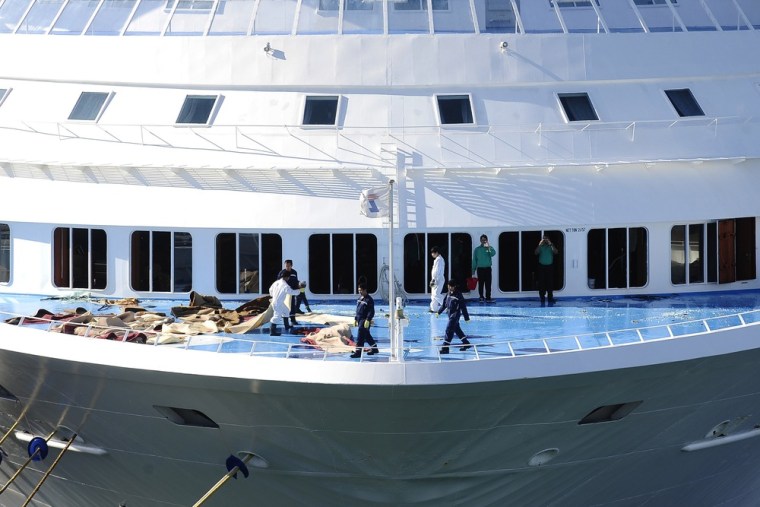The cruise industry has a remarkable safety record, but things sometimes do go wrong. Here, the four most common causes of accidents and mishaps over the past 20 years.
Rogue wave
Rogue waves up to 100 feet tall are a spontaneous natural phenomenon that cannot easily be predicted. In 2005, the Grand Voyager of Iberojet Cruises was smacked by a wave that knocked out propulsion and communications systems and injured 20 passengers. In 2010, the Louis Majesty, operated by Louis Cruise Lines, was struck by 26-foot waves off the coast of France, smashing glass and killing two of the 1,400 passengers and injuring another 14.
Preventive measures: Ship windows are being strengthened, and scientists are studying the prevalence of rogue waves across the ocean so that ships can be warned to avoid high-risk areas.
Effectiveness: The unpredictable nature of these waves can make them difficult to forecast. Researchers are continuing to improve their methods, in the hope of one day developing a more accurate early-warning system.
Most common reason for failure: Lack of reliable data.
Storms
Cruise lines carefully monitor storms. If a ship gets caught in rough weather, the results can be deadly. In 1998, all 100 passengers on Windjammer Cruises’ Fantome disembarked safely in Belize, but the crew (on company orders) attempted to sail the ship out of the path of Hurricane Mitch. The storm changed course and obliterated the vessel, killing all 31 crew.
Preventive measures: Buoys and satellites keep crew informed of changing weather.
Effectiveness: Modern weather surveillance is highly effective at charting and predicting storm paths, allowing cruise ships to easily avoid dangerous weather.
Most common reason for failure: Human error.
Fires
There were 72 fires aboard cruise ships over the last 20 years. In 2011, an engine room fire on the M.S. Nordlys, operated by the Norwegian cruise company Hurtigruten, killed two passengers and injured an additional 16 people. In April, the Azamara Quest’s engine room caught fire, with the blaze was quickly extinguished by the crew.
Preventive measures: Firefighting teams, miles of sprinkler piping, smoke detectors throughout the ship, and fire shutters to contain any blaze.
Effectiveness: Fires on ships are almost always contained and are rarely fatal.
Most common reason for failure: Mechanical problems.
Collisions
Rocks, reefs and icebergs have sunk five ships in the past 20 years. Ships have also collided with piers and other vessels. One of the most serious incidents occurred in 1992, when a Greek cruise ship hit a fishing trawler, killing more than 30 passengers. More recently, in March, Silversea’s Silver Shadow, sailing through heavy fog in Vietnam, collided with a container ship — none of the cruise ship’s passengers or crew were injured.
Preventive measures: Radio communication and navigational aids that use GPS and maritime charts to plot location and warn crew of obstacles ahead.
Effectiveness: The technology is only as accurate as the charts that the crew upload into the system (outdated charts have caused collisions) and is effective only when used properly.
Most common reason for failure: Human error.
More from Condé Nast Traveler
